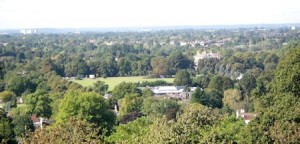Ref. Barkas v North Yorkshire County Council [2012] EWCA Civ 1373
The Court of Appeal has recently ruled definitively that a recreation ground provided by a local authority in exercise of its statutory powers, for local people to take part in lawful sports and pastimes, cannot be registered as a town and village green.

The case referenced above focused on the playing field at Helredale Road, Whitby in North Yorkshire. Whitby Urban District Council (UDC), the predecessor of Scarborough Borough Council (now an interested party), purchased the site in 1951 with plans to erect houses for the working classes.
UDC laid out and maintained the field as a recreation ground under s. 80(1) of the Housing Act 1936 (now covered by the Housing Act 1985) and maintained it that way for the 20 year period between 1987-2007, then announcing plans to construct on the site.
In order to protect it from this planned development, the appellant attempted in 2007 to register the field as a village green under s. 15 of the Commons Act 2006. A Village Green, as we have written before, is completely protected from development, even if planning permission has already been granted before it is declared a ‘Green’.
Nevertheless, even though the residents had used the field for the required 20 years for lawful sports and pastimes, the County Council rejected this application after accepting the conclusion of an independent inspector, Vivian Chapman QC. She concluded that although the use of the field met all of the other requirements of s. 15(2) of the 2006 Act, the local inhabitants’ use of the field for recreational purposes had been ‘by right’ and not ‘as of right’.
A subtle distinction, ‘as of right’ can be taken to mean without force, secrecy or permission, whilst ‘by right’ means by a formal statutory right. In this case, the inspector found that the land had been set out and maintained as a recreation ground under section 80 of the Housing Act 1936 (HA 1936) which reads as follows:
“(1)The powers of a local authority under this Part of this Act, to provide housing accommodation, shall include a power to provide and maintain, with the consent of the Minister and if desired jointly with any other person, in connection with any such housing accommodation, any building adapted for use as a shop, any recreation grounds or other buildings or land, which in the opinion of the Minister will serve a beneficial purpose in connection with the requirements of the persons for whom the housing accommodation is provided.”
It was accepted as a matter of fact that the land had been acquired by the local authority and laid out in connection with the council housing estate to the west. As a result, the land was used by these occupants ‘by right’, as the land was officially set aside for them, and not ‘as of right’ which they required to successfully register it as a village green.
The result in this instance will be that plans for development will move ahead unhindered. In the wider legal context, however, this decision is potentially of broad application as there will be many instances where land has been laid out by local authorities under section 80 of the HA 1936 or section 12 of the Housing Act 1985 (which is materially the same) and is now subject to the growing demand for development.
Following the path of this precedent, entitlement to use land under these sections will prevent registration of the land as a town or village green under the Commons Act 2006, thus removing another obstacle to the development of land previously in public use.
[contact-form][contact-field label=’Email’ type=’email’ required=’1’/][contact-field label=’I liked this article’ type=’checkbox’/][contact-field label=’I did not like this article’ type=’checkbox’/][contact-field label=’Comment’ type=’textarea’/][/contact-form]

